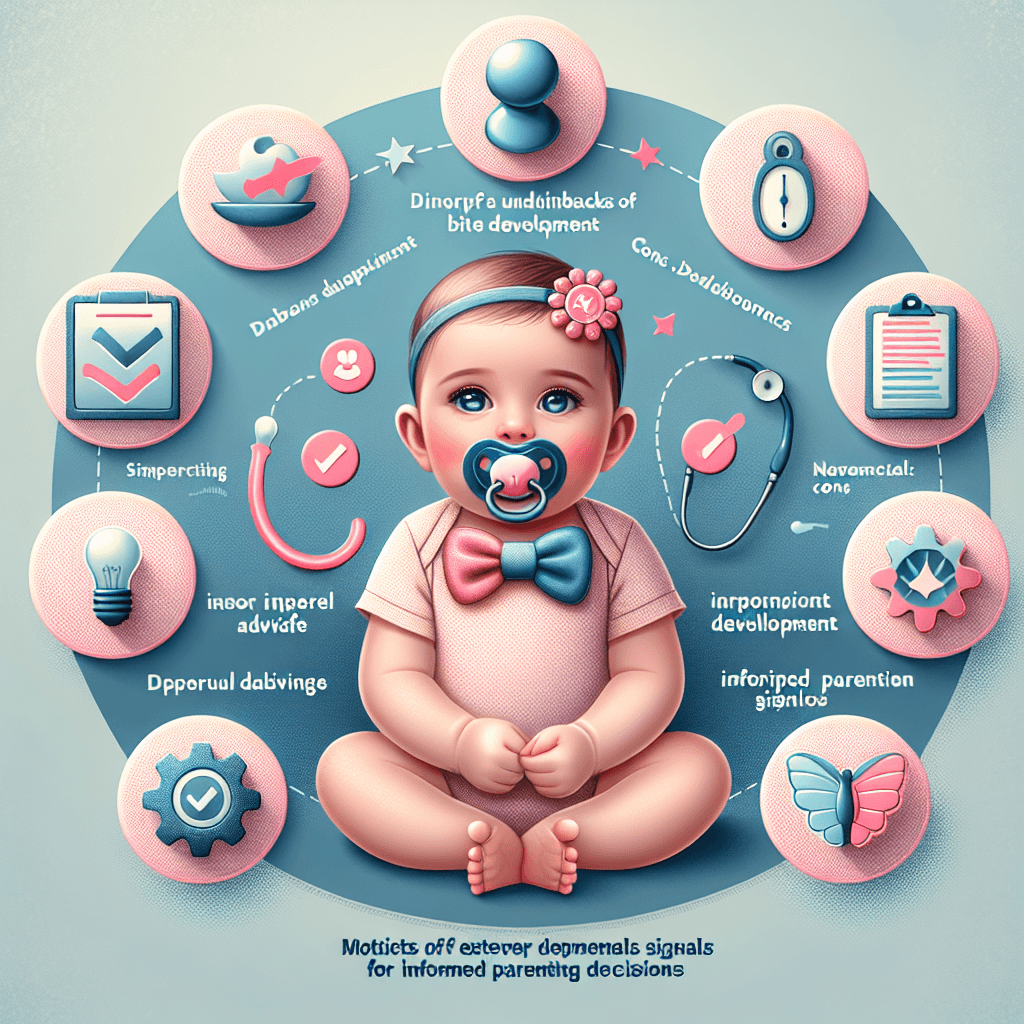Pacifier: Good or Bad for Baby Development?
When it comes to raising a baby, every parent wants to make the best decisions for their little one's health and well-being. One of the most debated topics is the use of the teat. Are pacifiers good or bad for children's development? This article aims to explore the advantages and potential disadvantages of pacifier use, providing parents with valuable information to help them make informed decisions.
The Impact of the Teat on Physical Development
In the first years of life, the physical development of the baby is rapid and essential. Many parents wonder if the pacifier negatively influences this progress. Studies show that although in the first months of life a pacifier can help reduce the risk of sudden infant death syndrome (SIDS), prolonged use can lead to dental problems such as malocclusion.
There are also concerns that using a pacifier could interfere with breastfeeding. But, according to specialists, if breastfeeding is already well established, using a pacifier should not create problems. It is important that parents choose the correct teat size and material to support healthy oral development.
The Impact of the Pacifier on Emotional and Social Development
When it comes to the emotional and social aspects of raising a child, the teat has its role. Sucking is known to be a self-soothing behavior important for managing baby's stress and anxiety.
However, excessive use or in inappropriate contexts can inhibit the development of self-regulation skills and delay social development if the pacifier is used as a substitute for parental interaction and comfort. Therefore, the recommendation is that parents use the pacifier sparingly and phase it out once the child begins to develop other coping mechanisms.
Recommendations and Tips for Parents
Parents who choose to use a pacifier should be aware of some tips and recommendations to minimize its negative impact:
- Insert the teat only after breastfeeding is well established to avoid nipple confusion.
- Choose soft, flexible teats of a size suitable for the child's age.
- Monitor the baby's sucking behavior and limit the use of the pacifier to moments of sleep or comfort.
- Begin the weaning process around 12 months of age to prevent orthodontic problems.
Alternatives to Teat Use
For parents who prefer to avoid using a pacifier, there are effective alternatives that can help soothe and comfort the baby:
- Use swaddling techniques, rocking and soft music to help the baby relax.
- Consolation by breastfeeding or, if appropriate, offering natural juice or water by bottle.
- Gradually introducing comfort items such as a blanket or stuffed animal.
Conclusion
The pacifier can be both good and bad for the child's development. The important thing is for parents to carefully weigh the pros and cons, use the pacifier sparingly, and be ready to remove it when the baby is ready. With the information and advice presented in this article, parents can make an informed decision to support their child in a healthy and balanced development. For more information and useful resources, we invite you to visit the specific sections of our store or subscribe to our newsletter.














































































































































